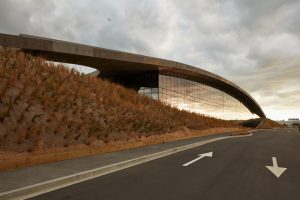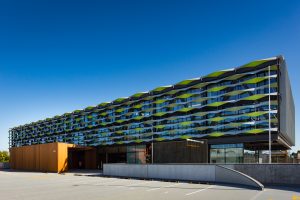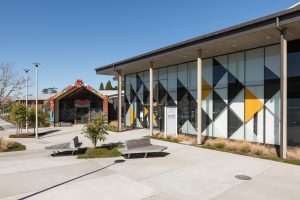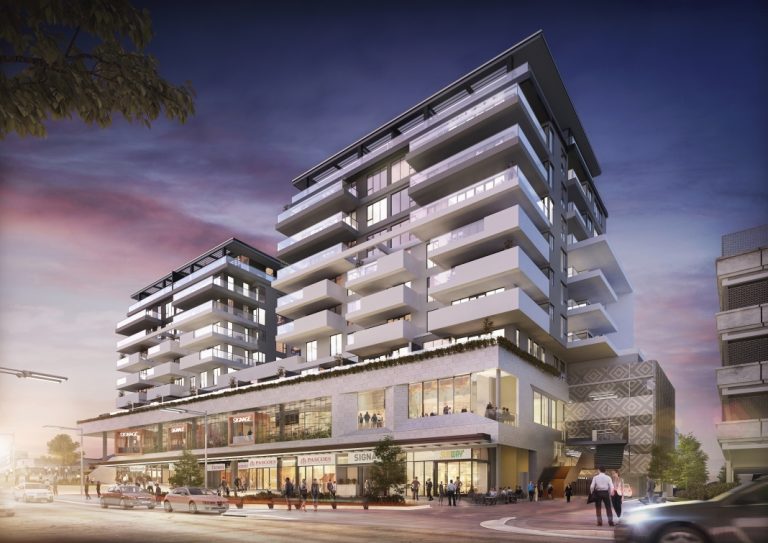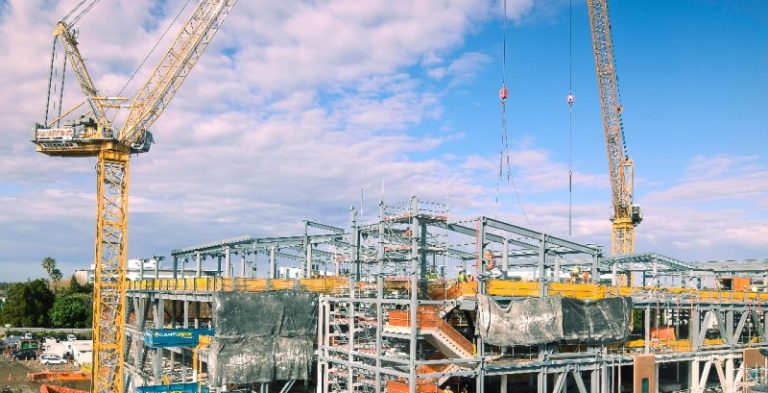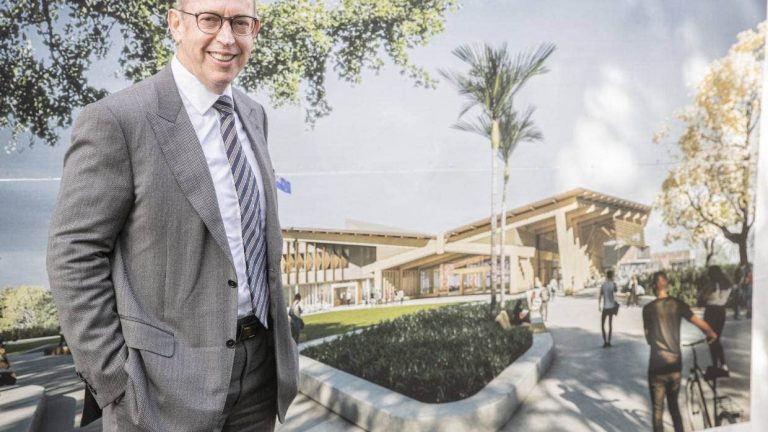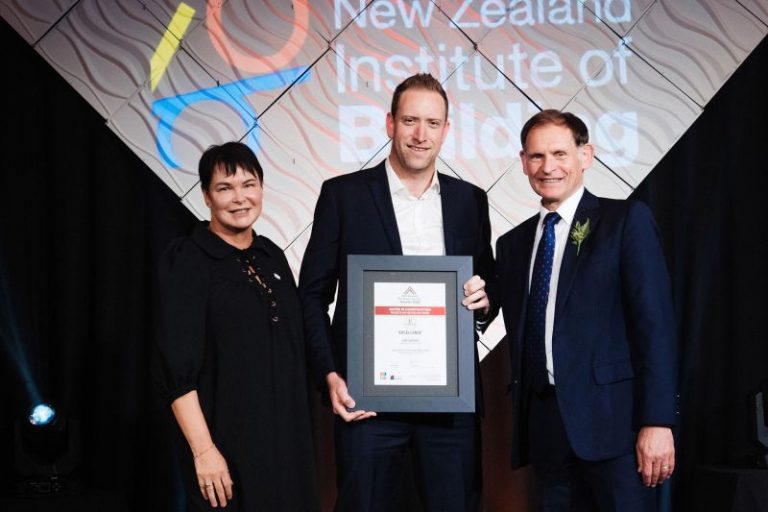OPINION PIECE BY: Sam Gordon, Project Lead
Building more sustainably has gained traction in the commercial sector in New Zealand over the last five years, with significant construction projects and developers, such as Auckland Airport and Auckland University, understanding the wider value and long-term positive impact of a greener, more sustainable building.
But what do we mean by “Sustainable” building? Well, it’s not just about a low carbon footprint, or stereotypical “green” considerations. Yes, it encompasses practices and systems that lessen environmental impact, but it also involves more holistic considerations that lower running costs, create healthy attractive environments to work in, achieves as many net zero-carbon targets as possible, plus incorporates resilience against hazards such as earthquakes, storms and flooding.
Architects across New Zealand are working with developers and corporate clients to create these future proofed buildings. The best outcomes we see are when the contractor, or builder commissioned for the project, are involved upfront, consulting on the design phases. This allows experienced sustainability advocates with practical construction experience, to advise on materials, lessons learnt from previous projects and the options available around materials to meet different price points.
Asking the right questions and understanding the materials and options on offer, will also help New Zealanders who are interested in building their own residential sustainable projects.
So as the developer or client, what sort of questions should you be asking through the design process? What considerations should you be seeking advice on?
Based on our experience these are the things that make the most difference and create a positive environmental outcome for any sustainable project:
- Thermal envelope
The thermal envelope of a building is probably the most important consideration when creating long term sustainability of your development, as it affects many other environmental considerations. You should seek high performing glass that provides thermal stability, even in extreme conditions. Well insulated ceilings and walls should also be considered, with a number of low carbon, highly effective products on the market. Building orientation, creating shade and air tightness are other ways to ensure a high performing building façade. A well-considered thermal envelope will make the building less expensive to heat and cool, require less energy overall, plus creates a healthy environment inside the building.
- Heating and cooling systems
Selecting an energy efficient heating and cooling system that performs well in the conditions of the location of the building is the next important consideration. Different systems work in different building designs, and choosing the one that will give the best output becomes quite specific to the construction, so experienced advice is needed. How you plan to use the building also plays a key part in system selection, as being able to open a window to provide passive ventilation works well in some cases, but in other environments mechanical ventilation such as full air conditioning are more suitable.
- Low energy electrical fittings
This is something that can often be overlooked in a development but makes an impact on your energy footprint and cost of consumption, so should be carefully considered. On a large building there are thousands of individual fittings and the placement and design of these plays a big part in how comfortable the building is to use and overall energy consumption.
Maximising the natural light available paired with energy efficient LED fittings and integrated ‘lighting control systems’ with smart features such as daylight sensors which mediate the light based on ambient conditions or occupancy sensors which ensure lights are not left on when they are not needed all plays a key part. Centralised lighting control also gives the user much more functionality to adapt and fine tune the lighting within each space such as turning off/on individual fittings or even set themes for events which can then revert back to the baseline setting once complete and functionality which was never available with traditional lighting circuitry.
- Low carbon and environmentally sustainable construction materials
Concrete can be much maligned for its environmental impact, yet there are products on the market that reduce the aggregate content and therefore the carbon footprint. For example, adding fly ash, plus choosing cement from a plant powered by renewable energy makes a significant difference. Similarly, you can specify timber framing that is certified from the Forest Stewardship Council, tracing its origin back to sustainable forestry, or choose steel from factories with sustainable practices such as electric powered using renewable energy, rather than coal fired, makes use of recycled content or has achieved an Environmental Product declaration.
There are many other considerations that can help such as rainwater collection tanks, environmentally friendly sealants, help making decisions over framing, plus minimizing building waste from the overall project.
Every consideration comes at a different price point, so budget is also key. Ensuring you have the right advice to navigate what will work best for your project, mindful of budget and having clear rationale on what can be comprised or not, to give you the most sustainable outcome. Finding a partner who has systems in place to trace the materials during the build helps to quantify what has been specified at the end of the project, to ensure you are delivering to your environmental objectives.
Many of Hawkins’ clients are looking to hold their buildings for long periods of time, so there are also tangible financial advantages to building “green” as the value holds over the lifecycle of the project. There are feel good benefits about reducing environmental impact, plus a green building is a highly attractive proposition for tenants, who are increasingly seeking these considerations for their own businesses.
New Zealand architects are coming up with some progressive designs which is evident by the six-star green rated buildings such as Foodstuffs new HQ at Auckland Airport and University of Auckland B201 Faculty of Education + Social Work and Faculty of Arts. What we’re focused on is helping clients with the “buildability” of that project so we can work through any issues and build with intent from the outset. There are many sustainable options now on the market, so with the right advice and stewardship, the future looks bright for a sustainably built environment in Aotearoa.
